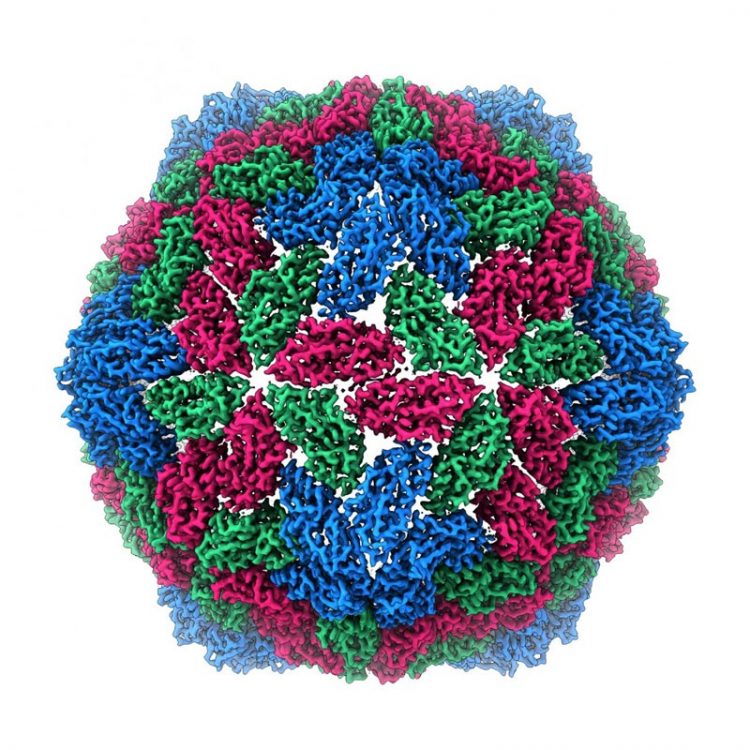Family of crop viruses revealed at high resolution for the first time

For the first-time we can take a molecular-level look at one of the world's deadliest crop killers. Credit: Univeristy of Leeds
The Luteoviridae are pathogenic plant viruses responsible for major crop losses worldwide. Transmitted by aphids, the viruses infect a wide range of food crops including cereals, legumes, cucurbits, sugar beet, sugarcane and potato.
Until now researchers have been unable to generate the quantities of these viruses needed to study their structures in high resolution.
Now a team of researchers have used recent advances in plant expression technology to generate sufficient quantities of the pathogen to allow more detailed scrutiny with state of the art microscopy techniques.
The method involves infiltrating a type of tobacco plant with the genes necessary to create virus-like particles (VLPs). From the inserted genetic information, the VLPs self-assemble inside the plant host. This technique avoids the need to handle the infectious virus.
Using the VLPs extracted from the plants the team from the John Innes Centre and the Astbury Biostructure Laboratory at the University of Leeds could observe the viral structures to high resolution by cryo-electron microscopy.
This provided, for the first time, a molecular-level insight into how the luteovirid capsid forms and suggests how it is transmitted by aphids. The method may help unlock the secrets of other viruses, say the team involved in the study.
Professor George Lomonossoff of the John Innes Centre says. “This development provides a platform for the development of diagnostic tools for this important family of plant viruses that cause enormous loses worldwide.”
Professor Neil Ranson from the University of Leeds adds: “The combination of plant expression technology and structural biology is hugely exciting, and we can use it to understand the structures of many other types of virus.”
Plant virus infection is responsible for global economic losses estimated at $30billion.
The Luteoviridae attack the plant vasculature which causes severe stunting leading to crop loss. The family includes barley yellow dwarf virus and potato leafroll virus which cause crop losses to a value of £40-60m per year in the United Kingdom.
###
The full study 'Combining Transient Expression and Cryo-EM to Obtain High-Resolution Structures of Luteovirid Particles' appears in the Cell Press journal Structure.
Media Contact
All latest news from the category: Life Sciences and Chemistry
Articles and reports from the Life Sciences and chemistry area deal with applied and basic research into modern biology, chemistry and human medicine.
Valuable information can be found on a range of life sciences fields including bacteriology, biochemistry, bionics, bioinformatics, biophysics, biotechnology, genetics, geobotany, human biology, marine biology, microbiology, molecular biology, cellular biology, zoology, bioinorganic chemistry, microchemistry and environmental chemistry.
Newest articles

A ‘language’ for ML models to predict nanopore properties
A large number of 2D materials like graphene can have nanopores – small holes formed by missing atoms through which foreign substances can pass. The properties of these nanopores dictate many…

Clinically validated, wearable ultrasound patch
… for continuous blood pressure monitoring. A team of researchers at the University of California San Diego has developed a new and improved wearable ultrasound patch for continuous and noninvasive…

A new puzzle piece for string theory research
Dr. Ksenia Fedosova from the Cluster of Excellence Mathematics Münster, along with an international research team, has proven a conjecture in string theory that physicists had proposed regarding certain equations….



